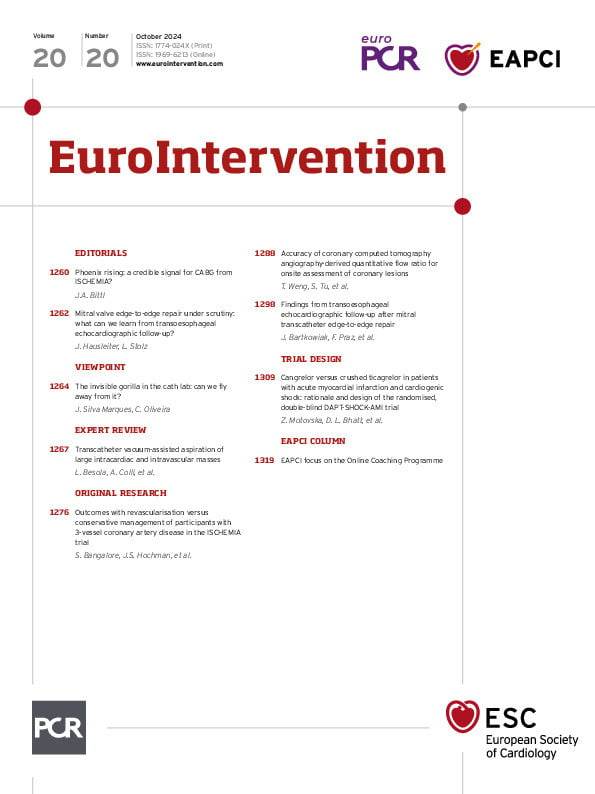From the aspiration of cardiovascular masses to new techniques for evaluating coronary lesions, or anatomical changes after mitral valve edge-to edge repair, a wide variety of topics are touched on in this issue – but what about that gorilla hiding in your cath lab? Do you know what that could be?
Transcatheter vacuum-assisted aspiration has become an alternative to surgery for certain high-risk patients with intracardiac and intravascular masses of various aetiologies, often seen as thrombi, tumours, or vegetations. In an expert review, Laura Besola, Andrea Colli and colleagues go over the current clinical evidence, indications and the different uses of vacuum-assisted aspiration in the treatment.
In a post hoc analysis of the ISCHEMIA trial, Sripal Bangalore, Judith S. Hochman and colleagues evaluate the outcomes of revascularisation versus medical therapy in patients with three-vessel coronary artery disease. Revascularisation, including both percutaneous coronary intervention and coronary artery bypass grafting, was associated with lower rates of cardiovascular death and myocardial infarction at four years, as well as an improved quality of life.
Tingwen Weng, Shengxian Tu and colleagues investigate the diagnostic performance of the Murray law-based quantitative flow ratio (CT-μFR), which is a novel coronary computed tomography angiography-derived method for quickly computing fractional flow reserve and identifying haemodynamically significant coronary stenoses and lesions.
Using transoesophageal echocardiography (TOE), Joanna Bartkowiak, Fabien Praz and colleagues evaluate anatomical changes and structural complications after mitral transcatheter edge-to-edge repair, investigating their association with clinical outcomes at two years.
Describing the upcoming DAPT-SHOCK-AMI trial, Zuzana Motovska, Deepak L. Bhatt and colleagues discuss the rationale and design of this study, which will randomise more than 500 patients to evaluate the benefits of cangrelor vs crushed ticagrelor in patients with acute myocardial infarction complicated by cardiogenic shock.

